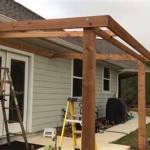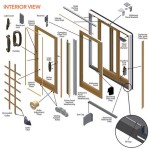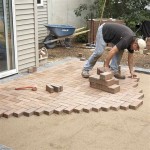Do It Yourself Patio Covers: A Guide to Enhancing Your Outdoor Space
Transforming your patio into a functional and aesthetically pleasing extension of your home can be achieved with the addition of a patio cover. Patio covers offer numerous benefits, including shade from the sun, protection from rain and elements, and enhanced privacy. While professional installation is an option, tackling this project yourself can be a rewarding experience, allowing you to customize the design and save on costs. This guide will equip you with the necessary knowledge and steps to successfully build your DIY patio cover.
Planning and Design: Laying the Foundation
Before embarking on the construction process, careful planning is essential. This involves determining the size, shape, and style of your patio cover. Consider the existing structure of your patio, the surrounding landscape, and your personal preferences. Additionally, factor in local building codes and regulations, particularly regarding structural strength and wind resistance.
When it comes to the style, there are numerous options available. Pergolas offer a classic look with open latticework, while solid roof covers provide complete protection from the elements. Retractable awning covers offer flexibility and allow for easy adjustment of shade levels. The choice ultimately depends on your budget, desired level of protection, and aesthetic vision.
Once you have finalized the design, create a detailed plan with accurate measurements, including dimensions, materials, and construction methods. This plan will serve as your roadmap throughout the project and ensure a smooth and efficient build.
Material Selection: Choosing the Right Components
The materials you choose for your patio cover will significantly impact its durability, aesthetics, and overall cost. Common materials for patio covers include:
- Wood: Offers a natural look and can be stained or painted to match your existing decor. Common choices include cedar, redwood, and pressure-treated lumber. It requires regular maintenance to prevent rotting and insect damage.
- Metal: Aluminum and steel provide strength and durability. They often require less maintenance than wood and are available in various colors and finishes.
- Vinyl: Offers low-maintenance and affordability, but may lack the elegance of wood or metal.
Consider the specific climate conditions in your area when choosing materials. Wood is more susceptible to moisture damage, while metal can become very hot in direct sunlight. Vinyl provides a good balance of durability and affordability.
In addition to the structural materials, you will need to select roofing materials. Options include:
- Solid roofing: Provides complete protection from the elements and can be made from metal, composite materials, or even concrete.
- Lattice roofing:Offers a more airy and open feel, but provides less protection from rain and sun.
- Fabric roofing: Ideal for retractable covers and provides flexibility in terms of shade control.
The choice of roofing material will depend on your budget, desired level of protection, and aesthetic preferences.
Construction Process: Bringing Your Vision to Life
Once you have gathered all the necessary materials and tools, you can begin the construction process. The specific steps will vary depending on the complexity of your design, but a general guideline includes:
- Prepare the site: Clear the patio area of any obstructions and level the ground.
- Install the posts: Dig holes for the posts and set them in concrete. Ensure that the posts are plumb and level.
- Assemble the frame: Cut and connect the beams, rafters, and other framing members according to your design.
- Install roofing: Attach the roofing material to the frame.
- Finish the details: Add any desired trim, fascia, or other decorative elements.
Throughout the construction process, it is crucial to double-check measurements, ensure proper alignment, and utilize appropriate fasteners. Safety should be a priority, and you should follow all manufacturer instructions and wear appropriate safety gear.
If you lack experience with construction projects, consider seeking assistance from a skilled friend or professional. They can offer guidance, ensure structural integrity, and help you avoid potential errors.

How To Build A Diy Covered Patio

11 Patio Cover Ideas Anyone Can Diy Backyard Covered Patios

25 Diy Patio Cover Ideas 2024 Easiest Options

11 Patio Cover Ideas Anyone Can Diy The Garden Glove

Diy Patio Cover Under 400 In Materials Budget Friendly Backyard

Budget Friendly Diy Patio Cover

25 Diy Patio Cover Ideas 2024 Easiest Options

Diy Alumawood Patio Cover Kits Shipped Nationwide

How To Build A Diy Covered Patio

25 Diy Patio Cover Ideas 2024 Easiest Options
Related Posts








